Navigating the world of respiratory protection can be a daunting task given the array of devices available and the varying environments in which they’re employed. Therefore, we’ve developed this comprehensive blog post, titled “Different Types of Respirators,” to guide you through this critical aspect of workplace safety.
In this blog, we will provide detailed explanations about the two main types of respirators: Air-Purifying Respirators (APRs) and Atmosphere Supplying Respirators (ASRs). APRs, which include Elastomeric Half and Full Facepiece Respirators, Filtering Facepiece Respirators, and Powered Air-Purifying Respirators, work by removing contaminants from the air before inhalation. ASRs, on the other hand, which encompass Supplied Air Respirators (SARs), Self-Contained Breathing Apparatus (SCBAs), and Combination Respirators, provide breathable air from an uncontaminated source.
What is Respiratory Protection
Respiratory protection refers to the measures taken to protect workers from inhaling hazardous substances that can cause serious health issues. These substances can include harmful dust, fumes, gases, mists, vapours, and insufficient oxygen. In essence, respiratory protection involves implementing practices and using equipment to ensure that workers are breathing air that is safe and does not pose a health risk.
Respiratory protection can include a variety of strategies, including effective ventilation, the use of respiratory protective equipment (RPE) like masks and respirators, and enforcing procedures and protocols for safe work in environments where respiratory hazards exist.
One of the most important elements of respiratory protection is the use of respirators. Respirators are designed to protect the wearer from inhaling harmful substances. There are different types of respirators for different types of hazards, and selecting the correct respirator for the job is critical.
All aspects of respiratory protection should comply with standards and guidelines set by occupational health and safety organizations, like the Occupational Safety and Health Administration (OSHA) in the U.S. These organizations provide comprehensive standards and guidelines for respiratory protection to ensure worker safety.

Types Of Respirators
Respirators, a type of PPE, demand employers to not only ensure their workers are using them properly but also provide training about how to select, wear, understand limitations, inspect, clean, care for, and store these devices. This knowledge forms a crucial part of a comprehensive employer PPE program. However, it’s essential to remember that respirators should only be employed when engineering controls like sufficient ventilation or scrubbing of contaminants are not feasible or inadequate.
There are primarily two types of respirators: Air-purifying respirators (APRs) and Atmosphere supplying respirators (ASRs), and they come in varying sizes and offer different levels of protection.
1. Air-Purifying Respirators (APRs)
APRs are a class of respiratory protection devices designed to remove airborne contaminants before they are inhaled. This process of purification involves passing the ambient air through a filtering element that captures the contaminants, thereby ensuring that the wearer breathes cleaner air. They’re typically used in environments where the air is contaminated with particles, gases, or vapours that are not immediately life-threatening.
Now, let’s dive into the specifics of each type of Air-Purifying Respirators (APRs):
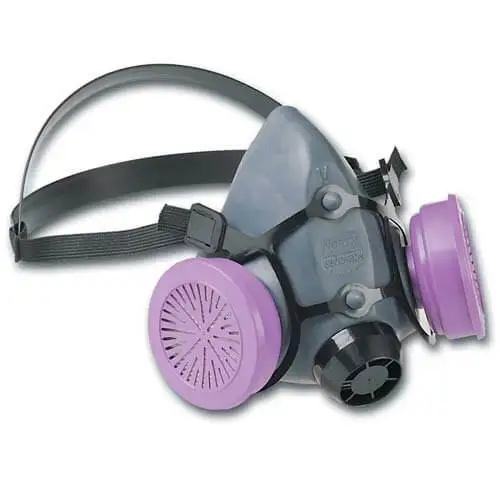
Elastomeric Half Facepiece Respirators
Elastomeric Half Facepiece Respirators cover the nose and mouth area and form a tight seal against the skin. They are made of durable, flexible materials such as silicone, rubber, or neoprene, making them reusable.
These respirators are equipped with replaceable cartridges or filters. The cartridges can contain a material specifically designed to neutralize certain gases or vapours, while the filters are intended to block particles such as dust or smoke. The type of cartridge or filter used would depend on the nature of the respiratory hazard. It’s crucial to select the right cartridge or filter to ensure adequate protection.
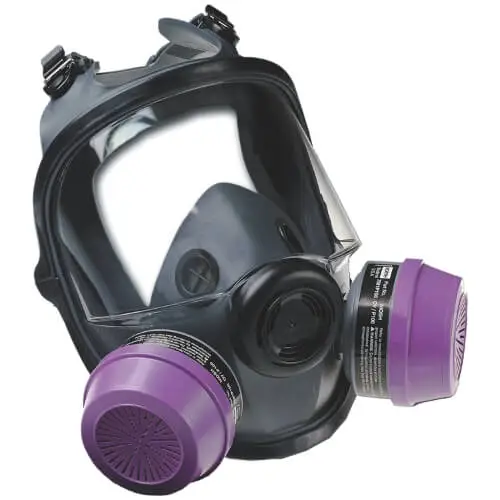
Elastomeric Full Facepiece Respirators
Much like the half-facepiece respirators, Elastomeric Full Facepiece Respirators are also reusable and made of durable materials. The key difference is that they cover the entire face, including the eyes, thereby offering an additional layer of protection.
These respirators are useful in environments where irritants can harm the eyes or where the concentration of gases or vapours is high. Like their half-face counterparts, these respirators can be equipped with different cartridges or filters to protect against specific hazards.
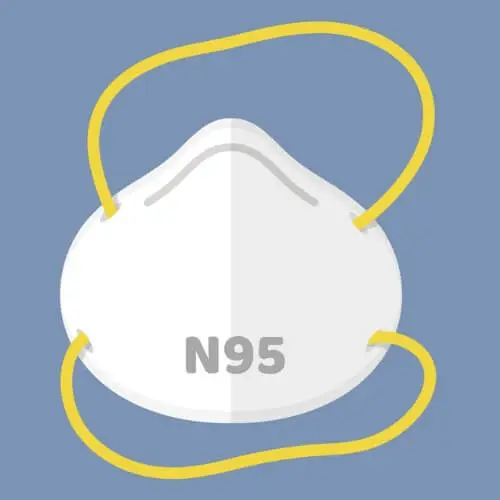
Filtering Facepiece Respirators
Often referred to as “dust masks” or “disposable respirators,” Filtering Facepiece Respirators are designed for single use. They cover the nose and mouth and are made of a material that can filter out airborne particles.
These respirators are typically used in environments with non-toxic dust, such as sawdust, or in locations with airborne allergens. They do not protect against gases, vapours, or very fine particles. It’s also important to note that they offer no eye protection.
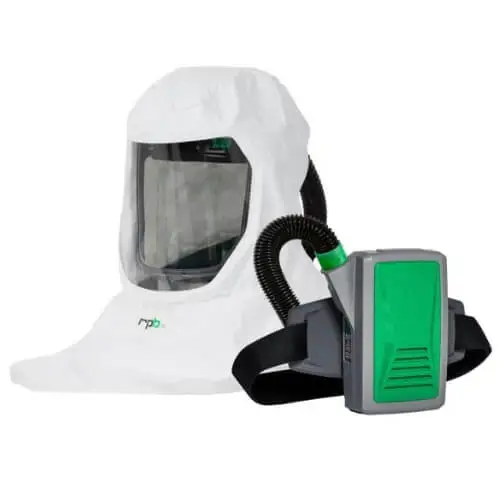
Powered Air-Purifying Respirators (PAPRs)
PAPRs provide a higher level of protection and comfort. They include a battery-powered fan that actively draws air through filters or cartridges and then supplies it to a facepiece or a hood. This powered airflow reduces the breathing resistance that is inherent in non-powered respirators.
PAPRs can be used with a variety of facepieces, such as half-mask, full-face, hoods, and helmets, providing a level of versatility. Depending on the attached filter or cartridge, they can offer protection against gases, vapours, and particles.
Remember that all APRs must fit well to be effective and regular fit testing should be part of a workplace respiratory protection program. Always refer to OSHA guidelines for proper use and limitations of these devices.
2. Atmosphere Supplying Respirators (ASRs)
ASRs are a category of respirators designed to provide breathable air from a source separate from the ambient environment. This makes them ideal for environments where airborne contaminants are present in high concentrations or where the atmosphere lacks sufficient oxygen. These respirators are frequently used in situations that are Immediately Dangerous to Life or Health (IDLH), such as emergencies, hazardous material spills, and confined spaces.
Here are the main types of Atmosphere Supplying Respirators:
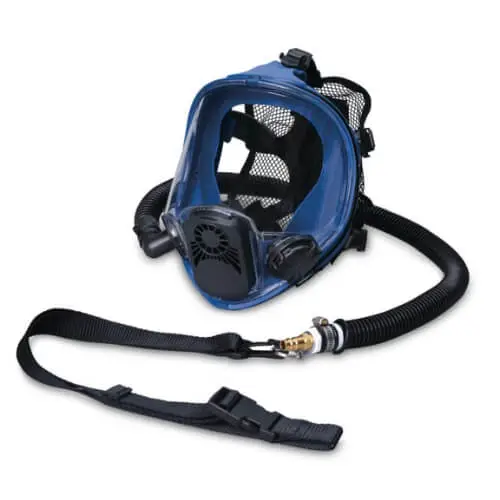
Supplied Air Respirators (SARs)
Supplied Air Respirators, often referred to as air-line respirators, connect the wearer to a source of clean breathing air through a long hose. This source is usually a stationary compressor or high-pressure cylinders that are situated in an uncontaminated area away from the work zone.
The air supply must be of high enough pressure to overcome the breathing resistance of the long hose and to provide an adequate amount of air to the wearer. Some models also offer a backup air supply, a self-contained air cylinder that can be used if the primary air source fails. It’s essential to note that these respirators, due to their reliance on an air hose, limit the mobility of the wearer.
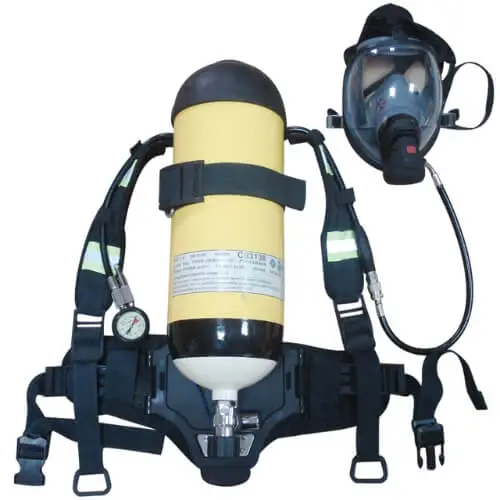
Self-Contained Breathing Apparatus (SCBAs)
SCBAs are designed for high-risk situations, often utilized in IDLH environments. They feature an entirely self-contained air supply, usually compressed air stored in a cylinder carried by the wearer. This independence from an external air source offers the wearer full mobility and makes SCBAs ideal for emergency response and escape scenarios.
There are two main types of SCBAs: open-circuit and closed-circuit. Open-circuit SCBAs release exhaled air into the environment, while closed-circuit SCBAs recycle exhaled air by removing carbon dioxide and adding supplemental oxygen before it’s re-inhaled. Closed-circuit SCBAs can provide breathable air for extended periods, but they are more complex and heavier than their open-circuit counterparts.
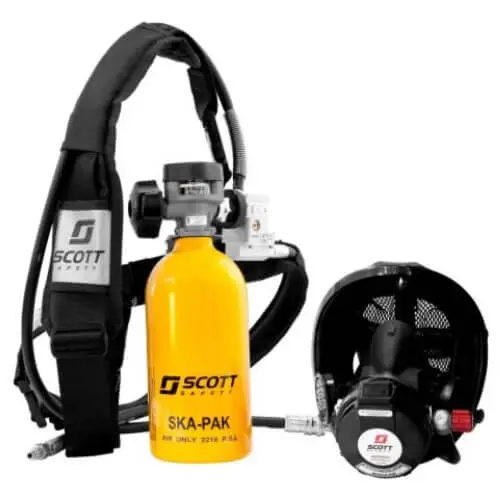
Combination Respirators
Combination respirators are a versatile form of respiratory protection, combining elements from different types of respirators. They may be a hybrid of supplied-air and SCBA respirators or supplied-air and air-purifying respirators.
In a combination supplied-air/SCBA respirator, if the primary airline fails, the respirator switches to its self-contained air supply, making it suitable for IDLH environments. On the other hand, a supplied air/air-purifying respirator provides respiratory protection using both a supplied-air hose and an air-purifying component. However, this type is not recommended for entry into IDLH environments due to the lack of a self-contained air supply.
It’s crucial to remember that the selection of a respirator should always be based on the specific hazards of the workplace. Adherence to OSHA guidelines and consultation with professionals can assist in determining the appropriate respiratory protection for your work environment.
Choosing The Right Respirators
Choosing the right respirator is crucial for ensuring effective respiratory protection in various work environments. The selection process involves considering several factors to match the respirator’s capabilities with the specific hazards present. Here are key considerations for choosing the right respirator:
- Identify the Hazard: Determine the type of respiratory hazards, such as particulates, gases, vapours, or oxygen-deficient atmospheres. This information will guide the selection of the appropriate respirator type.
- Understand Respirator Types: Familiarize yourself with different types of respirators, including Air-Purifying Respirators (APRs) and Atmosphere Supplying Respirators (ASRs), along with their variations.
- Assess Workplace Conditions: Evaluate the work environment, including air quality, temperature, humidity, and the presence of other potential hazards. Some respirators may perform better in specific conditions than others.
- Consider Respirator Fit: A proper fit is crucial for the respirator’s effectiveness. Assess whether the respirator is compatible with various face shapes and sizes and whether fit testing is necessary.
- Evaluate Comfort and User Requirements: Take into account factors such as wearer comfort, the need for clear communication, compatibility with other personal protective equipment (PPE), and the duration of respirator use.
- Check Compliance with Standards: Ensure that the chosen respirator complies with relevant safety standards and regulations, such as those set by OSHA or other governing bodies.
- Seek Expert Advice: If unsure about the selection process, consult with safety professionals, industrial hygienists, or respiratory protection experts who can provide guidance based on specific workplace requirements.
Remember, selecting the right respirator is essential for providing adequate respiratory protection. Proper training, fit testing, and regular maintenance are crucial to ensure the continued effectiveness of the chosen respirator.
Conclusion
Understanding the various types of respirators and how they function is pivotal to ensuring safety in numerous industries. From Air-Purifying Respirators to Atmosphere Supplying Respirators, each type serves a unique purpose, catering to specific environmental conditions and contaminants. Remember, selecting the appropriate respirator is crucial and should always consider specific workplace hazards. An informed decision can not only ensure compliance with OSHA regulations but also significantly contribute to the prevention of occupational illnesses and the safeguarding of workers’ health. Let this guide serve as a comprehensive resource for you in prioritizing safety in your workplace.

